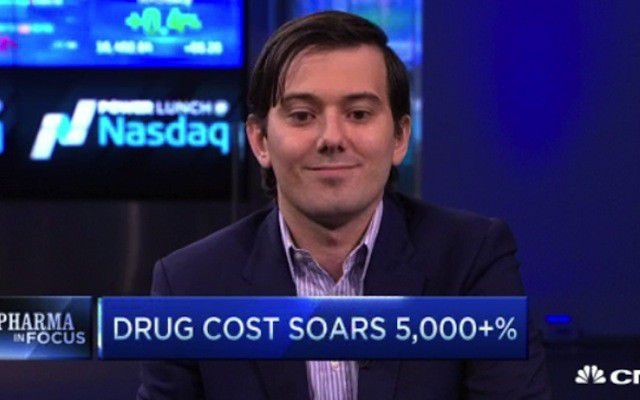TPP: A good deal for Big Pharma

On Oct. 5, negotiations in the Trans-Pacific Partnership, a a multi-nation deal held in secret between twelve Pacific Rim nations, reached an agreement said to cover more than 40 per cent of global GDP.
Those participating countries: Australia, Brunei, Canada, Chile, Japan, Malaysia, Mexico, New Zealand, Peru, Singapore, United States, Vietnam.
The agreement is meant to establish some degree of global parameters for trade in the 21st century. A task of great proportion and one that is at odds with economic superpower, China, which stated it views free trade “as a new platform to further opening up to the outside and speeding up domestic reforms.”
Within the last decade or so, China has signed multiple free trade agreements with Korea, Costa Rica, New Zealand, Australia and a number of others.
The TPP deal is nevertheless massive and by several measures, historic; however, given the text has yet to be officially released a majority of the 30-chapter agreement remains shrouded in secrecy and thus, controversy.
WikiLeaks released documents (in October 2014 and May 2015) pertaining to two chapters, one on environmental regulation and the other, intellectual property (IP) rights.
Both are critical global issues and the latter is of extensive concern to Internet users and freedom of speech advocates.
But another by-product, as discussed in a Public Citizen review of the TPP IP, is broader patent and data protections that pharmaceuticals would be able to take advantage of by ostensibly delaying competitor’s access to markets involved in the TPP.
In other words, generic versions of medications, copycats, will be held back from Pacific Rim markets for specified terms and reasons.
According to politico.com, the draft text consists of lawmaking that would make the battle for generic pharmaceutical products ever-more difficult.
Included in the provisions, for example, are what the U.S. terms biologics, which include vaccines, cancer medicines and various therapies like insulin.
As described by Public Citizen, within the last 10 to 15 years, biologics have been created through biotechnology via proteins from plants, animals and micro-organisms, forming, in the end, complex molecules.
The TPP IP provisions outline two options: an eight-year mandatory minimum regarding market exclusivity from the date a biologic is approved or a five-year exclusivity from the date the biologic is approved in the country concerned.
The provisions also include an additional exception to protect public health, this section, critics such as Professor Carlos Correa, director of the Centre for Interdisciplinary Studies on Industrial Property and Economics Law at the University of Buenos Aires, argue is too vague and suggests clearer parameters are warranted.
Further, the adoption of these new protocols must incur without a transitionary period for eight of the 12 participating nations, including Canada.
Malaysia, Mexico, New Zealand and Vietnam have transitionary periods included for specific pharmaceutical areas, stretching from three years to 10 based on whether it pertains to patent linkage, biologics, small molecule and the few other designated areas of pharmaceuticals outlined in the leaked chapter.
Toronto medical student Arnav Agarwal published the article A global comparison between brand-name and generic drugs at academia.edu in 2014, where he stated, “The US has higher sales of generic drugs as compared to Canada and the UK owing to its privatized health care system.
“In contrast,” Agarwal further wrote, “governments in countries such as Canada and the UK cover a significant portion of pharmaceutical related costs, thereby reducing consumer incentive to purchase
generic drugs at a lower price.”
Nevertheless, according to the Canadian Generic Pharmaceutical Association, generic drugs are used to fill 40 per cent of all prescriptions in Canada.
The overt concern of course is how severe the TPP IP rules, clearly in favour of Big Pharma when it comes to the drug industry, will affect the Canadian consumer.
With close to half of prescriptions being filled with said generic versions of brand-name medications and the like, those concerns seem sufficiently grounded.
The question of efficacy of generic drugs is evident in the prevalence of their usage here and elsewhere.
It also does, however, call into question the differentiation between the generic and original drugs manufactured. If there is no discernible difference, there’s a point to be made about patent infringement.
On the other hand, If generic pharmaceuticals are truly so similar so as necessary to prevent copycat reproductions through strengthened legislation, the lower costs associated with the latter should be examined in tandem with the brand-name’s market price.
In short, why should the consumer be forced to pay an arbitrarily high cost?
It should be noted, in the U.S., the average Republican senator received $19,673,28 from corporate TPP supporters to lobby for the fast-tracking of the TPP bill, as reported by The Guardian in May 2015.
On the other side of the aisle, Democrats received, on average, $9,689.23 from that same set of donors, with an overall average of $17,676.48 donated to each of the 65 “yea” votes.
Similar data could not be found for Canada, which, citizens should note, arrived late to the TPP talks, along with Mexico, which begs the final question: in who’s best interest does the TPP deal serve on various fronts?
Computer software, music, literature and other IP issues are also covered in the TPP IP provisions, but those concerning the rights of pharmaceutical companies strike as most controversial, after all public health should be paramount.
Greater scrutiny will be necessary as the deal which reached a final agreement must now seek approval across the national legislatures involved in the Pacific Rim trade deal.



